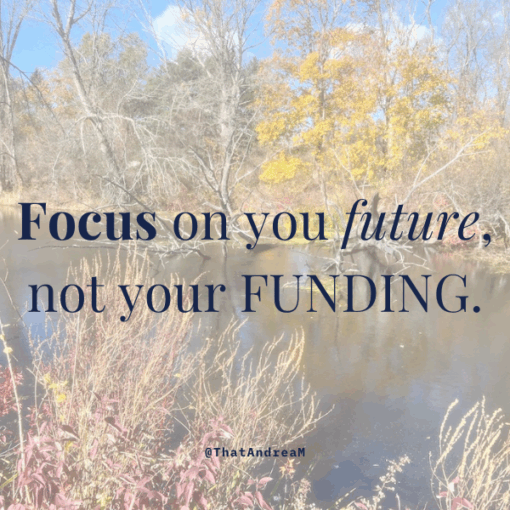A common question I get is…
What is the most important skill a leader should improve?
Storytelling is, or should be, on the top of every leader’s list.
As a leader, your ability to tell a story can be the difference between inspiring your team to achieve great outcomes or leaving them uninspired and unmotivated.
Below we will step through examples of how stories can increase your impact as a leader.
I will also share a personal story that has defined my path forward, and hopefully shows you the power of your own stories.
Let’s Jump In: Why is Storytelling important?
Here are 9 ways that storytelling can improve impact your ability as a leader:
- Communicate your vision – There is nothing more powerful than a leader describing the WHY behind their vision for the future. This is the most important story a leader should develop and share often.
For example, when a CEO tells the story of how and why the company was founded, it can rally the employees around a shared purpose.
- Build trust – It is important to build emotional connections and demonstrate authenticity and vulnerability through stories.
For example, trust can be built by a leader who tells the story of the challenges they faced when they first were promoted, what they learned, and how they strive to work with the team going forward.
- Teach – Use storytelling to share important knowledge and create a culture where learning and exploration is valued.
For example, when a leader tells the story of a problem that they faced, what worked and what did not work when addressing it, others can learn from the experience.
- Inspire action – Use stories to build a sense of urgency and help drive change.
For example, a leader who tells a story about a team that achieved great results and the impact it had on the company can inspire other teams to replicate that success.
- Create a culture – Stories can help shape and reinforce the company’s culture by talking about shared values and behaviors.
For example, when a leader shares stories about the company’s commitment to customer service, it can help build a culture of putting the customer first.
- Foster teambuilding – Storytelling is a powerful tool for building teams. By sharing stories of successes and challenges, it can build a sense of unity and shared purpose among team members.
For example, telling stories of how a team pulled together during a tough time can build a shared sense of accomplishment.
- Build consensus – In order to get buy-in to new ideas and influence others, stories can create the shared understanding that is necessary for consensus.
For example, a leader who encourages others to share stories about the struggles they are having while working on a hybrid team can help build consensus by identifying common concerns and finding solutions that work for everyone.
- Share insight – When you meet with a customer, come back with stories about the insight you now have. Facts and figures are great, but weave in knowledge by telling the story behind them.
For example, imagine the difference between seeing last year’s revenue number for the company versus a CEO telling you the story behind it. Now imagine the head of sales telling the story of the challenges and victories along the way.
- Establish leadership – Leaders who use storytelling to demonstrate their own leadership skills, such as problem-solving, decision-making, and strategic thinking, can help employees trust in their abilities to lead the company.
For example, a leader that shares a story about how they achieved significant growth in sales in their last company can establish their expertise and experience in building a sales team.
My Story of My Greatest Challenge
I promised an example of a story – so here is my personal story about my recovery from a brain injury.
4 years ago, I had a brain injury. It took me 3 years to recover.
I had to rebuild from the very basics.
It was the best thing that ever happened.

After my brain injury:
• I had difficulty speaking
• my balance caused me to fall many times a day
• my working memory was faulty
And no one had answers as to how or if I would recover.
I learned more about life during that time than any other.
Here are 10 life-changing lessons I’ve learned:
 Do the hard stuff
Do the hard stuff
Playing it safe, only gets you so far. Find the limits of your capabilities, and nudge them forward. Repeat.
Part of the key to my recovery had to do with brain/eye communication. Going through vision therapy, if I pushed too hard, I was rewarded by vomiting alongside the highway on my ride home.
This happened every week for months. And yet I went back for more.
 Take the risk
Take the risk
As a serial entrepreneur, I have taken a leap many times. What looks like jumping from a train to others is often the only sensible choice.
They don’t know your circumstances.
Sometimes you just take a deep breath, and then go for it. But this was different.
Other times in my life, I had faith that, no matter what, I would figure it out.
But with this brain injury, my very core, my mind, was unstable. untrustworthy. unreliable.
For the first time ever, I could not trust myself.
And this was terrifying.
 Have Courage
Have Courage
Courage is being afraid and doing it anyway.
Do not let your fear of the unknown get in the way of what needs to be done.
I had to learn again, how to trust in myself to take risks.
I was an outpatient at a brain injury hospital during my recovery.
After every visit as I waited for the elevator, I saw this sign thanking one of their staff for “assisting people to restore their lives.”
I would remind myself that was my goal:

 Treasure your Health
Treasure your Health
It’s only when you lose your ability to do the things you love, that you truly realize how fragile life is.
Everything I had worked for, slipped like sand through my fingers.
• The team I built.
• The company I founded.
• The work I loved.
And even worse:• Gathering with friends.
• Being in noisy environments, like holidays with family.
• Helping my kids with their homework.
• Traveling by myself.
All became extremely difficult and even impossible at times.
I felt lower lows than I ever had before. As I recovered I was:
 Grateful
Grateful
And humble.
I learned to truly appreciate what I have. Life is unpredictable. And through it all I found an inner source of …
 Self-reliance
Self-reliance
As much as you surround yourself with support, you will many times be grinding it out alone.
But:
• You can do this.
• Even if it is hard.
• And even if you want to quit
• Even if the very foundation of you feels like it is crumbling.
 Unfortunately, Step by step is the only way
Unfortunately, Step by step is the only way
As much as you want:
• a quick fix
• a big leap
• a magic wand
Progress does not work like that.
Progress is made step by step, day after day.
And sometimes, progress goes in the wrong direction, and you lose all the ground you gained.
 It is your choice
It is your choice
You can have faith, or you can give up.
You can listen to doctors say “you won’t get better,” or you can try anyways.
I felt overwhelming frustration during these times and had more days than I can count feeling despair.
And each time I had to choose.
 You never know
You never know
• How it will turn out
• What will actually help
• How it will eventually just click back into place
One of my therapists told me recovery would be so slow I would not see it, until one day I woke up and said, “hey, I’m better.” I remember the moments:
• When I got my “big words” back (describing something as noxious)
• When I could think of an algorithm again (modeling birds flying in a flock)
• When I was able to hike again (to a beautiful rainbow waterfall)
These moments are my highlight reel in my head.
 |
Living life, as best you can, through an uncertain future.
• And finding joy.
• Finding love.
• Finding forgiveness.
These are gifts. And now, that I am back to “myself”, I try to practice gratitude and give thanks.
 Follow Your WHY
Follow Your WHY
Your WHY will guide you when the path gets challenging.
Before my injury, why WHY was about changing the world.
But during my darkest times, my WHY was simple.
Get well for the people who loved me.
Knowing I was loved and needed.
Being a mom saved me.
A fellow patient in my group speech therapy described it as having “blank pages”‘ in your brain where you used to have thoughts. \
I had periods where my brain was that way. blank.
But slowly, thankfully, it got better.
And as it did, my WHY was able to expand again.
 |
 Changed
Changed
I am forever changed from how I was.
I have more empathy and compassion for those who are struggling.
I’ve learned to slow down, and calmly break down a thought, only to build it back up again.
I make the tough decisions.
It was all too clear that:
Life is too short. … too precious … too tenuous to take for granted.
So, charge forward.
Decide what you want, and don’t waste time waiting for the time to be right.
But sometimes, the script you follow is nothing like you planned. And…
That’s ok.
What is waiting on the other side of that uncertainty, was exactly where you should be.
So my big 10 takeaways were:









Thanks for reading my story.
Telling it. Sharing it.
Helps me in ways I cannot explain.
I’ll be sharing everything I learn about leadership and rebuilding my company (and myself). Come along: @ThatAndreaM.
 |
Closing thoughts
Storytelling is a powerful skill, that can help you inspire, lead, and connect with others. It’s a skill, when honed, can help you make a lasting impact on those around you.




